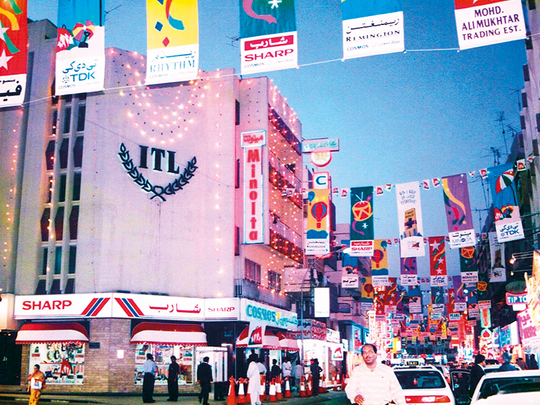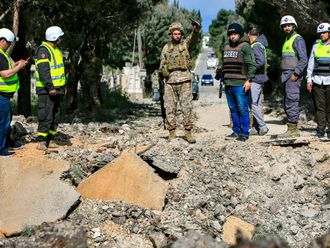
Dubai: What’s in a name? A great deal, if it is Meena Bazaar you are referring to.
Long before the glitter of the growing gold shops beckoned on this happening street in Bur Dubai, the world’s most sought-after textiles and ethnic garments were sold here. And as the earliest traders tell us, the name Meena Bazaar derived from the signboard of a textile shop set up at the entrance of the lane in 1973.
“Ours was a three-shutter shop that stood where the Malabar Gold and Jewellery store is today. It was around 2,000 square feet in area and sold readymade shirts, saris and textiles from India and later Japan, Korea and Taiwan,” said Suresh Nathumal of Sarda Trading.
“The three windows of our showroom displayed five-six mannequins. Our signboard carried the name Meena Bazaar and since we were at the very entrance, the name came to be used for the whole lane and it stuck, even after our showroom shut down in 2010,” he added.
Businessman Ram Buxani, who built the pioneering ITL Cosmos showroom, paved the way for the market, said the shops selling saris, shirts and dress material were a huge hit right from the early days.
“I was the first to move to this lane from the abra side because of high rents and many traders followed suit. We were selling textiles and electronics. The place had a great vibe. As families strolled around the bustling market, looking at the glistening lights and dressed up mannequins displayed at the shops, they were reminded of Delhi Red Fort’s Meena Bazaar during the Mughal era when a special closed market would be held for women of royalty,” said Buxani, adding Sarda Trading’s signboard with the same name gave it an official ring.
He said Meena Bazaar refers to just one street and not the neighbourhood around it.
Businessman Ashok Sawlani of Royalex Textiles said the textile market boomed in the late 1970s eighties and nineties. “We opened our textile shop in 1982 but handed over our space to a jeweller in 2006. There has been a lot of change in the area over the years.”
As rents began to soar, the smaller traders were forced to downsize or move out. “The reason why you see so many jewellers here today is that only they could afford the high rents,” said Buxani.
Ishwar Kishwani, owner of Ratan’s, which has been selling perfumes and electronics since 1975, said, he also opened a jewellery shop in the area.
“Despite these changes, the market has retained not just its name, but also its fame. I don’t think I will ever want to move out of this area.”












